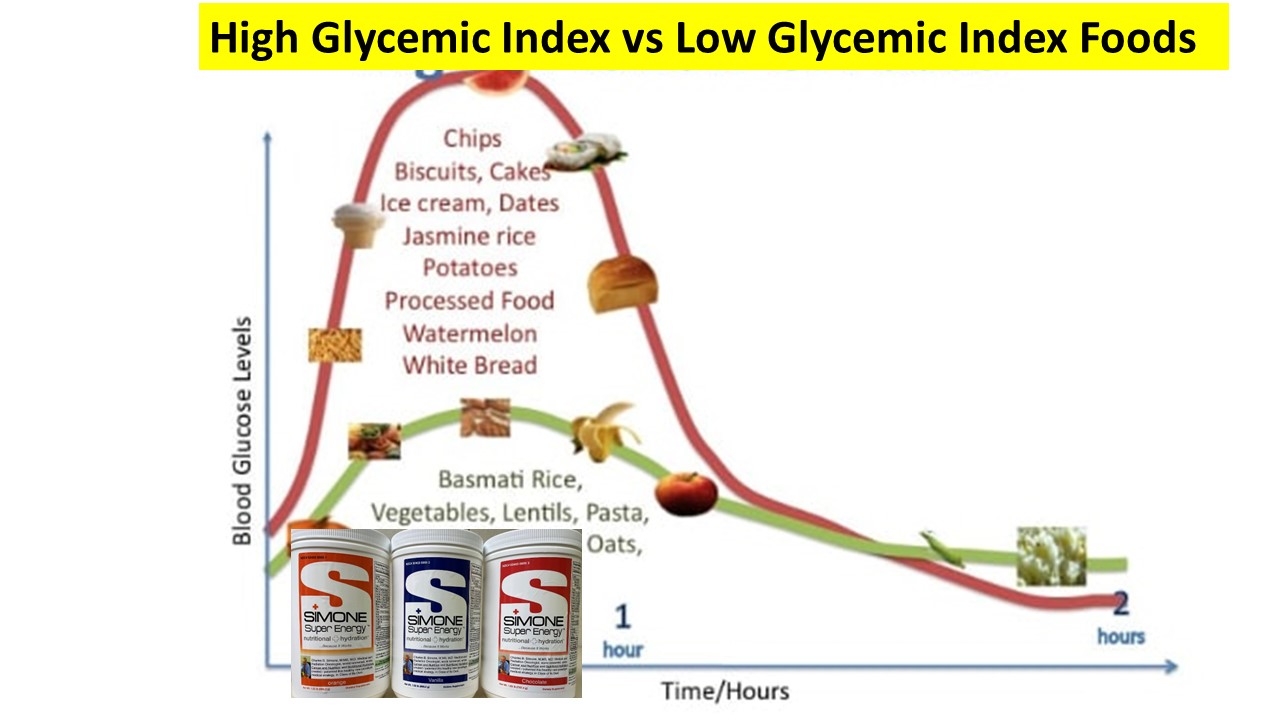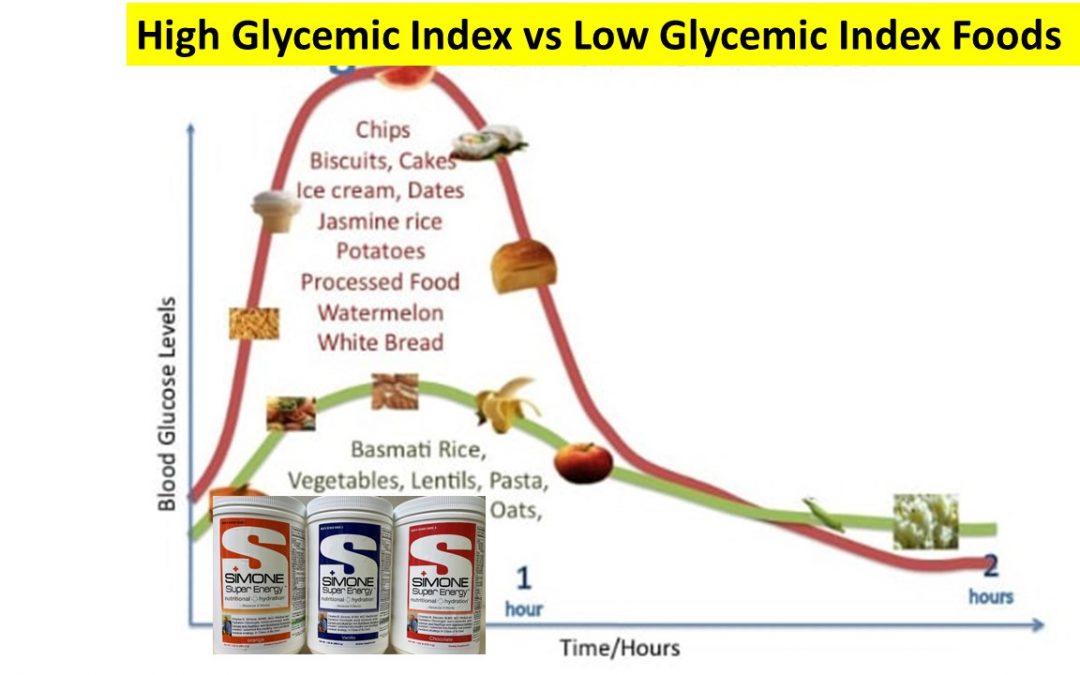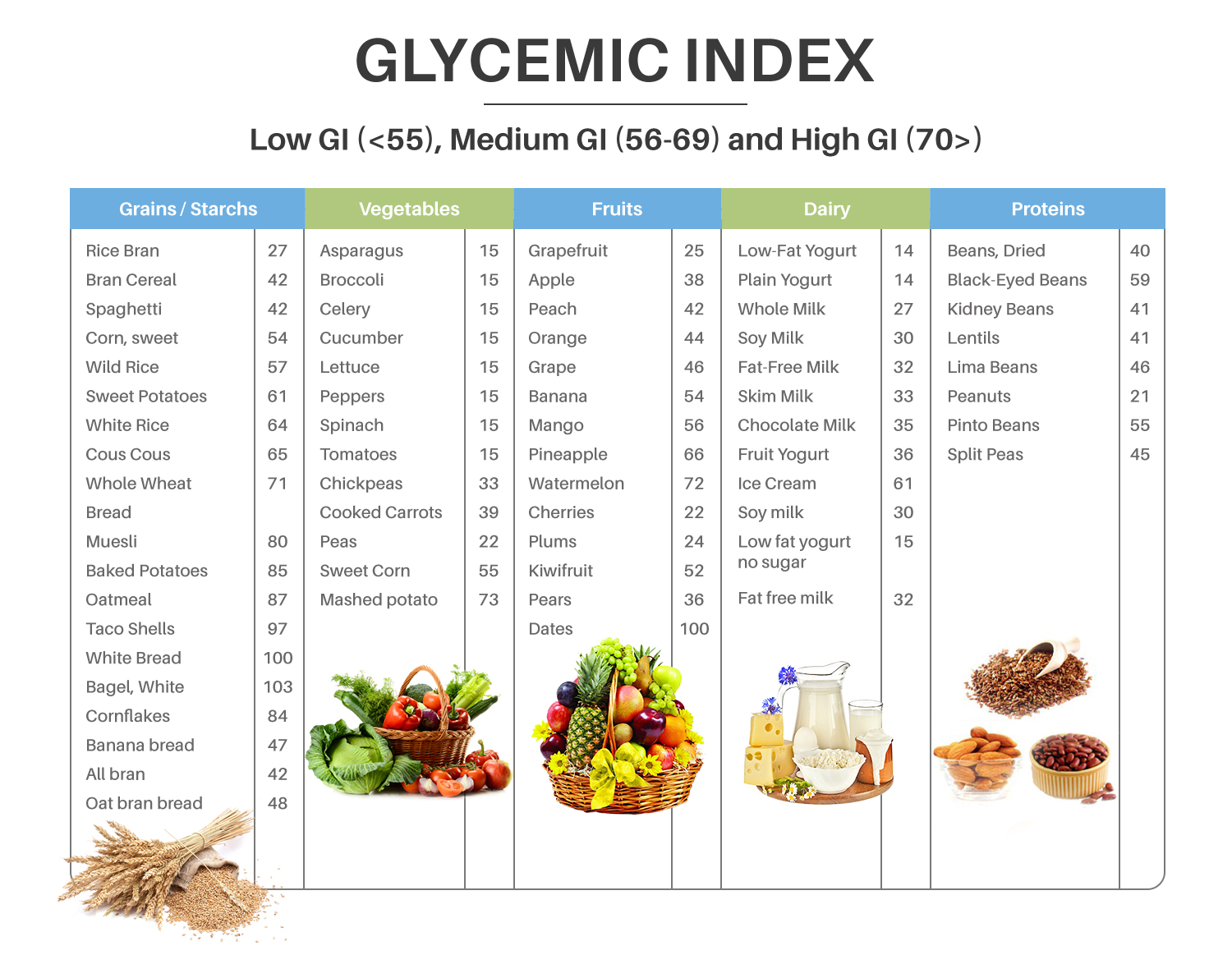We do not diagnose disease or recommend a treatment protocol or dietary supplement for the treatment of disease. You should share this information with your physician who can determine what nutrition and disease treatment regimen is best for you. Ask your physician any questions you have concerning your medical condition.
You can search this site or the web for topics of interest that I may have written (use Dr Simone and topic).
“We provide truthful information without emotion or influence from the medical establishment, pharmaceutical industry, national organizations, special interest groups or government agencies.” Charles B Simone, M.MS., M.D.
GLYCEMIC INDEX
https://bit.ly/3YoQQQ8
SIMONE SUPER ENERGY HAS A LOW GLYCEMIC INDEX (GI) of 42 even though the “Added Sugars” are 17 gm because FRUCTOSE is the dominant sugar (GI = 23) and ribose has a negative glycemic index.
The Glycemic Index (GI) of a food or drink is the effect it has on the body’s blood sugar levels. Each individual sugar has a different Glycemic Index. Foods or drinks with a low Glycemic Index are absorbed slowly and cause a steady rise and fall in blood glucose levels and more sustained energy. However, foods or drinks with a high Glycemic Index will force blood glucose levels to rise and fall quickly causing you to feel a burst of energy followed fatigue.
INDIVIDUAL SUGAR |
GLYCEMIC INDEX |
GLUCOSE |
100 |
SUCROSE – table sugar(50% Glucose + 50% Fructose) |
65 |
LACTOSE |
46 |
FRUCTOSE |
23 |
THERE ARE FOUR CATEGORIES OF GLYCEMIC INDEX
GLYCEMIC INDEX |
RANGE |
EXAMPLE |
HIGH |
70 – 100 |
Glucose = 100 |
MODERATE |
56 – 69 |
Bananas, raisins, sweet potatoes |
LOW |
Less than 55 |
SIMONE SUPER ENERGY, fruits, vegetables, beans, dairy |
ZERO |
0 |
Meats, Fish, Oils |
The higher the Glycemic Index, the higher the spike in blood sugar over time. Low Glycemic Index foods or drinks keep blood sugar levels lower.

A Comparison of Blood Glucose Over Time for High and Low Glycemic Index Foods.
Why Are The Glycemic Index Numbers Important?
A low glycemic index diet has been associated with improvements in:
-
Cancer Risk Decreased [1,2]
-
Obesity [3-5]
-
Type 2 Diabetes [5-8]
-
Gestational Diabetes [9]
-
Metabolic Syndrome [10]
-
Polycystic Ovary Syndrome (PCOS) [11]
-
Nonalcoholic Fatty Liver Disease (NAFLD) [12]
-
Dyslipidemia [13]
-
Hypoglycemia [6]
References
U.S. Government, Veterans Administration: GLYCEMIC INDEX https://www.va.gov/WHOLEHEALTHLIBRARY/docs/Glycemic-Index.pdf
https://www.fns.usda.gov/usda-fis/usda-foods-database Glycemic index chart – Complete (600+) list from all sources.
https://foodstruct.com/glycemic-index-chart
https://www.sugarnutritionresource.org/news-articles/what-is-the-glycemic-index-of-sugar
1. Turati F, Galeone C, Augustin LSA, La Vecchia C. Glycemic Index, Glycemic Load and Cancer Risk: An Updated Meta-Analysis. Nutrients. 2019 Oct 2;11(10):2342. doi: 10.3390/nu11102342. PMID: 31581675; PMCID: PMC6835610.




